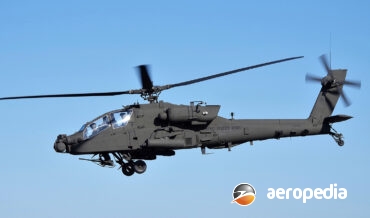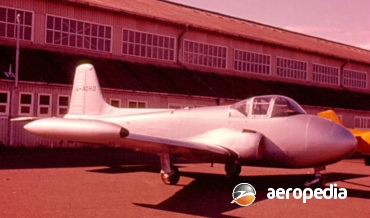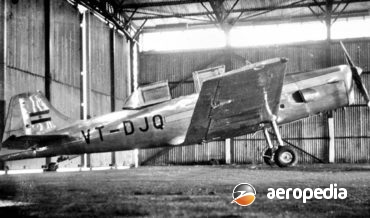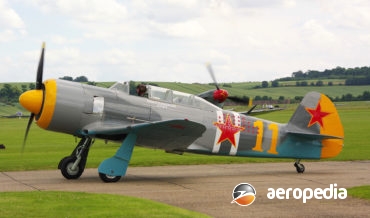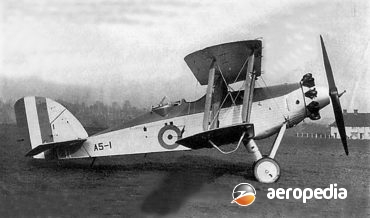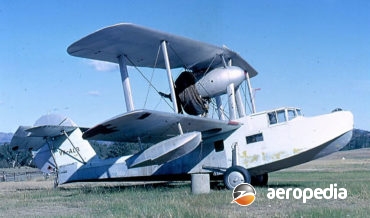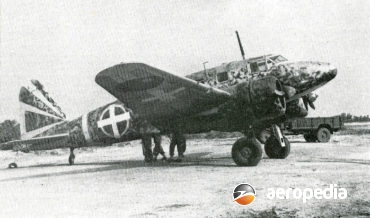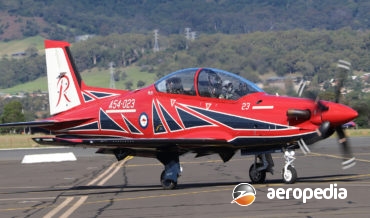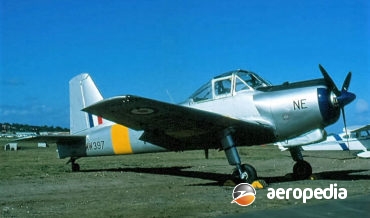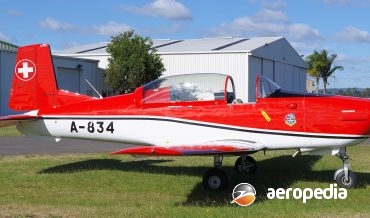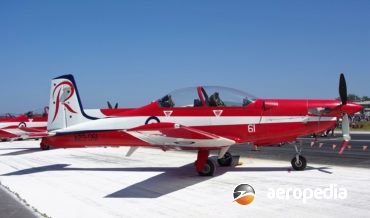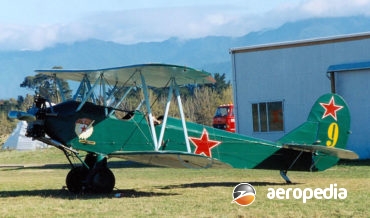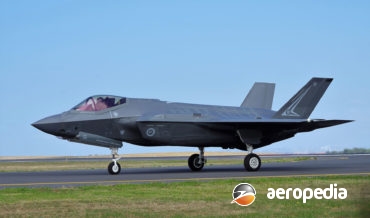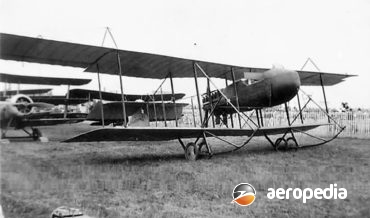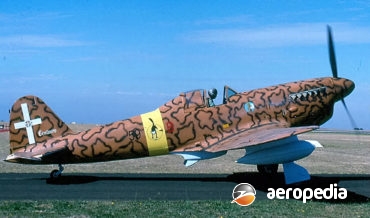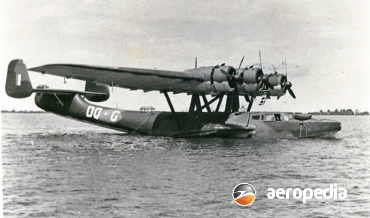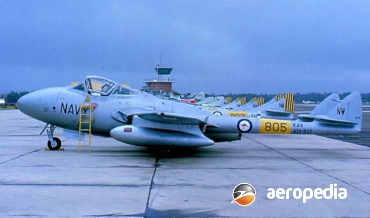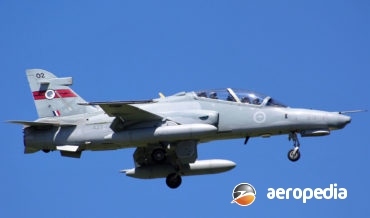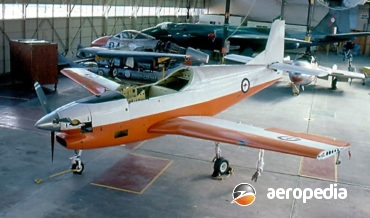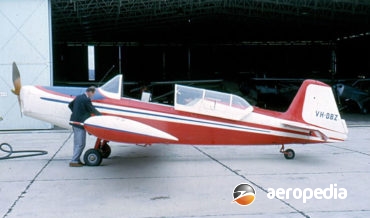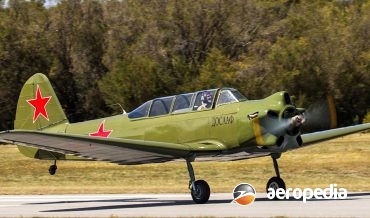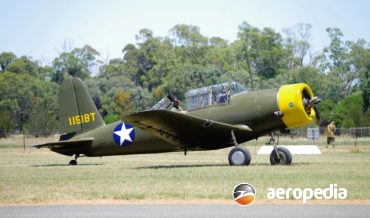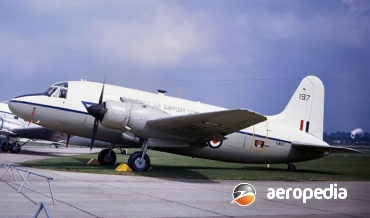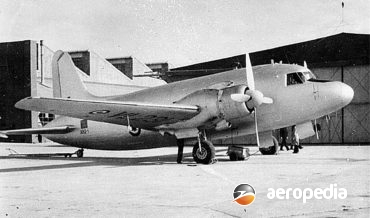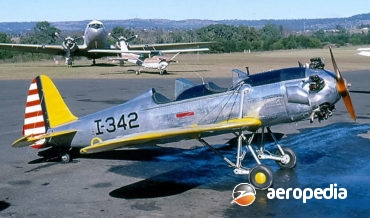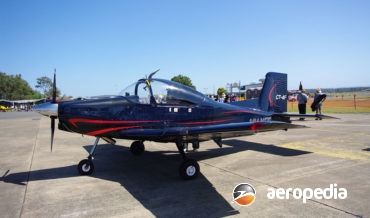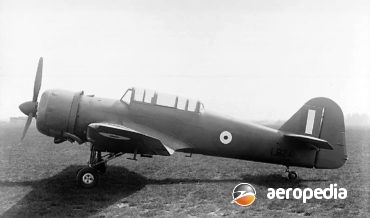All Contents
Contents
On 15 January 2021 to meet Project Land Requirement 4503 the Australian Government ordered 29 examples of the Boeing AH-64E Apache Guardian to replace the the troublesome Eurocopter Tiger attack helicopter with the Australian Army.
David C. Eyre
- March 2, 2021
The P-84 Jet Provost was developed as a private venture utilising a considerable proportion of the structure of the piston-engine P-56 Provost, which was then in service with the RAF as a basic trainer.
David C. Eyre
- August 24, 2019
The HT-2 was designed by Dr V M Ghatge, Chief Designers of Hindustan Aircraft Ltd at Bangalore, India.
David C. Eyre
- August 24, 2019
The Yakovlev Yak-11 (known to NATO as Moose) began to enter service with the Soviet Airforce in 1947 and bore some resemblance to the designer, Aleksandr Yakovlevs, wartime fighter designs, the wing, tail assembly, and undercarriage being similar to those of the Yak-9 single-seat fighter.
David C. Eyre
- May 19, 2019
In 1927 specification 26/27 was issued for a general purpose military aeroplane to be used for light bombing sorties, artillery observation patrols, reconnaissance and photographic work for the RAF and later target towing, and to meet this requirement the Wapiti was designed and built by the Westland Aircraft Works.
David C. Eyre
- May 19, 2019
In 1929 a specification was issued for a boat-hulled amphibian for shipboard operation to replace the Supermarine Seagull III, a number of which were in service with the RAN on board the seaplane carrier HMAS Albatross.
David C. Eyre
- May 19, 2019
The Tachikawa Aircraft Co Ltd was founded in 1924 and was basically known for producing primary trainers for the Japanese Air Force from 1927. In 1940 work began on the Y-39, a low-wing twin-engine monoplane, which was built in a variety of variants to meet a number of needs.
David C. Eyre
- May 19, 2019
The Kingfisher was designed in 1957 by Rex Beisel of the Chance Vought Aircraft Division of United Aircraft Corp as a two-seat scout and observation aircraft for the US Navy, with the capability of being launched from catapults on board battleships, cruisers, and a number of destroyers.
David C. Eyre
- May 19, 2019
Since the 1970s Pilatus Aircraft at Stans in Switzerland has been involved in the design and development of turboprop-power trainers for air forces, resulting in the PC-7, PC-9, and later the PC-21
David C. Eyre
- May 19, 2019
The Provost replaced the Percival Prentice in service in 1953 as the basic training aircraft for the Royal Air Force.
David C. Eyre
- May 19, 2019
Pilatus Flugzeugwerke based at Stans. was established on 16 December 1939 to produce aircraft and one of its designs was the P-3 tandem two-seat trainer (HB-HON) first flown on 3 September 1953.
David C. Eyre
- May 19, 2019
The PC-9 was a development of the very successful PC-7 Turbo-Trainer, the latter having the flat-rated 410 kw (550 shp) PT6A-25 engine and the PC-9 having the PT6A-62, flat-rated at 709 kw (950 shp) for take-off.
David C. Eyre
- May 19, 2019
Considered by many to be one of the, if not the, most produced aircraft of all time, with estimates of aircraft completed ranging from 30,000 to 40,000, the Polikarpov PO-2, also known as the U-2, primary trainer biplane flew for the first time on 7 January 1928.
David C. Eyre
- May 19, 2019
Originally required as a navigation trainer for the RAF, the military conversion of the eleven-passenger Lockheed Model 14 Super Electra promised so much in performance that the decision was made in 1938 to order the type for the RAF off the drawing board as the Model 214 Hudson.
David C. Eyre
- May 19, 2019
The Lockheed Martin F-35 – or the Joint Strike Fighter as it was initially known - represents potentially the single largess and most ambitious military aircraft development for many years and is aimed at providing one aircraft to meet the requirements of a number of military services.
David C. Eyre
- May 19, 2019
General Hirschauer, the Director of military aviation in France in 1915, sought that the Farman brothers, Henry and Maurice, design an aircraft to replace the MF-7 and MF-11 and they designed it around a cockpit which was ovoid in shape and was suspended between the wings and had a more
David C. Eyre
- May 19, 2019
Late in World War II the Fiat company in Italy designed the G-55 Centauro single-seat fighter powered by the Daimler Benz DB-605 12-cylinder VEE liquid-cooled engine, and this aircraft, although built in relatively small numbers, fought very successfully with the Fascist Republican Airforce.
David C. Eyre
- May 19, 2019
One of the most successful military turbojet powered trainers, the Magister was produced in large numbers, some 437 being completed for the French Air Force, and it was licence built, being produced in Finland by Valmet OY (62), Israel by Israel Aircraft Industries (36), and West Germany by Flugzeug Union
David C. Eyre
- May 19, 2019
The DO 24 was a tri motor, high-wing all metal construction cantilever flying boat with sponsons, the latter containing much of the fuel which was fed to gravity tanks in the wings.
David C. Eyre
- May 19, 2019
The Fairey III was a very successful military general purpose biplane of the1920s which was built in a variety of models.
David C. Eyre
- May 19, 2019
Designed as a private venture, the de Havilland Vampire two-seat trainer was a development of the Vampire single-seat fighter-bomber. Known as the DH-115 Vampire T.11, the first of two prototypes (G-5-7 – later WW456) was flown for the first time on 15 November 1950.
David C. Eyre
- May 19, 2019
In the late 1930’s the RAAF was operating a small fleet of Supermarine Seagull V biplanes for reconnaissance, air-sea rescue, and general operations and was having problems keeping the aircraft airworthy. The wings were built of metal and with operations on salt water corrosion was causing problems.
David C. Eyre
- May 19, 2019
In 1971 Hawker Siddeley and British Aerospace were selected to design and build the HS.1182 trainer for the RAF, and since then more than 700 examples have been supplied to many of the Worlds airforces in a variety of models.
David C. Eyre
- May 19, 2019
On 1 December 1981 the Government announced than an Australian design would be pursued; and on 16 June 1982 it announced that a contract had been let with the Australian Aircraft Consortium Pty Ltd (AAC) for the design, development, and construction of two prototypes of a new basic trainer (designated
David C. Eyre
- May 19, 2019
The Aerospatiale Ecureuil was designed for the civil market, the prototype (F-WVKH) being flown for the first time on 27 June 1974 with a Lycoming LTS 101 turboshaft, being followed by the second prototype (F-WVKI) with a Turbomeca Arriel 1A engine.
David C. Eyre
- May 19, 2019
One of the most successful freight aircraft available to operators in the 1930s and 40s, the Curtiss C-46 Commando was produced by the Curtiss-Wright Corp in 1936 when it embarked upon the design of a transport known as the CW-20 which had 20 berths as a night sleeper transport, and
David C. Eyre
- May 17, 2019
The Trener / Trener Master series of light aircraft was designed to meet a specification calling for a standard basic training aircraft that would meet the needs of both military and civil flying schools.
David C. Eyre
- May 8, 2019
Towards the end of World War II the basic Soviet Air Force trainer, known as the UT-2M, received some development and improvements, including enclosed cockpits and changes to the undercarriage.
David C. Eyre
- May 8, 2019
The Yak-50 was designed by Sergei Yakovlev and Y Yankevitch as an improved aerobatic aircraft to succeed the Yak-18 series at the 1976 World Aerobatic Championships which were held that year in the city of Kiev in the Ukraine.
David C. Eyre
- May 8, 2019
The Hadrian was designed by the Weaver Aircraft Company (Waco) to meet a requirement of the United State Army.
David C. Eyre
- May 8, 2019
In 1938 the US Army tested a private venture training aircraft built by the Vultee Corporation and known as the V-54. The prototype (NX21753) first flew in June that year with a 336-kw (450-hp) Wright Whirlwind engine.
David C. Eyre
- May 8, 2019
Following the success of the Viking, RAF Transport Command ordered a new variant suitable for the role of military ambulance, freighter, glider-tug, troop carrier, and dropping supplies.
David C. Eyre
- May 8, 2019
In October 1944 the British Ministry of Aircraft Production issued a specification for a short/medium haul airliner and VICkers produced the Viking, the first of three prototypes (G-AGOK) designated Type 491 being flown on 22 June 1945 at Wisley.
David C. Eyre
- May 8, 2019
Although looking somewhat similar to the Ryan STA/STM series of two-seat military trainers, the Ryan PT-22 was in fact an entirely different aeroplane built by the same manufacturer.
David C. Eyre
- May 8, 2019
In 1934 Tubal Claude Ryan created the Ryan Aeronautical Corporation in a location similar to where the old Ryan Aircraft Company had built its designs.
David C. Eyre
- May 8, 2019
Edward Stinson in 1926 formed Stinson aircraft with a facility at Willow Run in Detroit to build aircraft.
David C. Eyre
- May 8, 2019
The Piaggio P.148 was designed by Giovani Casiraghi for Piaggio in Italy as a two-seat training aircraft, the prototype flying for the first time on 12 February 1951.
David C. Eyre
- May 8, 2019
The CT-4F is a variant of the CT-4E series produced by Pacific Aerospace and Raytheon Australia, a prototype (VH-XFR) being built and shown at the Australian International Air Show at Avalon, VIC in 2007, this model being aimed at meeting a requirement of the Australian Department of Defence for a
David C. Eyre
- May 8, 2019
To meet RAF requirements for a specialised target-tug, F G Miles designed the M-25 Martinet powered by a 649-kw (870-hp) Bristol Mercury XX or XXX engine, providing accommodation for a pilot and winch operator, the aircraft to carry six flag or sleeve targets which were housed under the centre fuselage,
David C. Eyre
- May 8, 2019
The AM-3 was a joint venture by Aerfer Industrie Aerpospaciali Meridionali SpA of Turin, and Aermacchi of Varese, to produce a three-seat light tactical support and observation aircraft
David C. Eyre
- May 8, 2019
Recent Comments
Archives
Categories
- No categories
Categories
- No categories
Latest Posts
Newsletter

